关注咖评(微信公众号 vdailycom ) 发现美好咖啡馆 开一家自己的小店
咖啡杯测,英文叫 coffee cupping,也叫 coffee tasting。通俗的说就是用一种特殊的冲泡方法来品尝咖啡。杯测(杯品)咖啡时,我们要区分咖啡的风味、醇厚度、酸度和湿香气是否宜人。多数杯品师采用以下的标准来评判咖啡。
While tasting the coffee, you should try to discern whether the flavor, body, acidity and aroma of the coffee is pleasant, or unpleasant. Here are the criteria that most tasters use to judge coffee.
酸度Acidity :
酸度是咖啡的必备特征,是咖啡在舌下边缘和后腭产生的干的感觉。咖啡酸度的作用与红酒的口感类似,具有强烈而令人兴奋的质感。没有足够的酸度,咖啡就趋于平淡。酸度与酸味不同,酸味是令人不快的不好的口味特征。
Acidity is a desirable characteristic in coffee. It is the sensation of dryness that the coffee produces under the edges of your tongue and on the back of your palate. The role acidity plays in coffee is not unlike its role as related to the flavor of wine. It provides a sharp, bright, vibrant quality. With out sufficient acidity, the coffee will tend to taste flat. Acidity should not be confused with sour, which is an unpleasant, negative flavor characteristic.
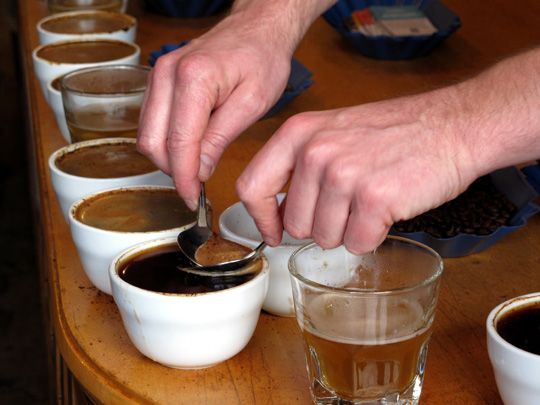
湿香气 Aroma
湿香气很难与风味分开。如果没有嗅觉,我们的基本味觉就只是:甜、酸、咸和苦。湿香气丰富了软腭对风味的辨别。一些微妙、细腻的差别,比如“花香”或“酒香”的特性,就来自于煮泡咖啡的湿香气。
Aroma is a sensation which is difficult to separate # flavor. Without our sense of smell, our only taste sensations would be: sweet, sour, salty, and bitter. The aroma contributes to the flavors we discern on our palates. Subtle nuances, such as "floral" or "winy" characteristics, are derived # the aroma of the brewed coffee.
醇厚度 Body :
醇厚度是咖啡在口中的感觉,即咖啡作用于舌头产生的粘性、厚重和丰富度的感觉。喝全脂牛奶与喝水的感觉不同,就是一个很好的例证。我们对咖啡的醇厚度的感觉与咖啡萃取的油质和固形物有关。印尼咖啡明显比南美洲、中美洲咖啡的醇厚度要高。如果你无法确定几种咖啡的醇厚度差异,可以试着将咖啡加入等量的牛奶。醇厚度高的咖啡用牛奶稀释后会保留更多的风味。
Bodyis the feeling that the coffee has in your mouth. It is the viscosity, heaviness, thickness, or richness that is perceived on the tongue. A good example of body would be that of the feeling of whole milk in your mouth, as compared to water. Your perception of the bodyof a coffee is related to the oils and solids extracted during brewing. Typically, Indonesian coffees will possess greater body than South and Central American coffees. If you are unsure of the level of body when comparing several coffees, try adding an equal amount of milk to each. Coffees with a heavier body will maintain more of their flavor when diluted.
风味Flavor:
风味是咖啡在口中的总体感觉。酸度、湿香气和醇厚度都是风味的组成部分,正是它们的平衡和均质才产生了我们的风味总体感。下面是一些典型的风味特征:
Flavor is the overall perception of the coffee in your mouth. Acidity, aroma, and bodyare all components of flavor. It is the balance and homogenization of these senses that create your overall perception of flavor. The following are typical flavor characteristics:
一般风味特征General flavor characteristics:
丰富——指醇厚度和浓郁程度;
复杂——对多种风味的感觉;
平衡——所有基本口感特征都令人满意,没有一种口感掩盖另一种口感。
Richness—refers to bodyand fullness;
Complexity— the perception of multiple flavors;
Balance— the satisfying presence of all the basic taste characteristics where no one over-powers another
令人喜欢的风味特征:
清新明亮的、干的、轻快的或者活泼的——(中美洲咖啡常见):
焦糖味的——像糖或者糖浆的;
巧克力味的——类似不加糖的巧克力或者香草的回味;
鲜美的——舌尖感觉到的微妙细腻的风味(水洗新几内亚产阿拉比卡豆);
土味的——泥土的芳香特质(典型的苏门答腊咖啡);
芬芳的——一种芳香的特质,范围从花香味的到多香料的;
果味的——一种芳香的特质,让人联想到浆果或橙子;
甘美芳醇的——口感圆润、顺滑,缺乏酸度;
有坚果味的——类似炒坚果的回味;
香料味的——让人想起各种香料的风味和芳香;
甜味的——无涩口的;
野生的——一种野生的风味,一般不被认为是宜人的;常见于埃塞俄比亚咖啡;
酒香味的——一种让人联想到充分熟酿的葡萄酒的回味(常见于肯尼亚和也门咖啡)。
Typical specific desirable flavor characteristics:
Bright, Dry, Sharp, or Snappy— (typical of Central American coffees);
Caramelly —candy like or syrupy;
Chocolaty— an aftertaste similar to unsweetened chocolate or vanilla ;
Delicate— a subtle flavor perceived on the tip of the tongue (typical of washed New Guinea arabica);
Earthy— a soily characteristic (typical of Sumatran coffees);
Fragrant— an aromatic characteristic rangingf romfloral to spicy;
Fruity— an aromatic characteristic reminiscent of berries or citrus;
Mellow— a round, smooth taste, typically lacking acid;
Nutty— an aftertaste similar to roasted nuts;
Spicy— a flavor and aroma reminiscent of spices;
Sweet— free of harshness;
Wildness— a gamey flavor which is not usually considered favorable but is typical of Ethiopian coffees;
Winy— an aftertaste reminiscent of well-matured wine (typical of Kenyan and Yemeni coffees).
令人不喜欢的风味特征:
苦的——产生于舌根的味道,多由于烘焙过度所致;
乏味、无刺激性的——风味中性;
炭味的——带有烧焦了的碳味;
无生命的——同“Flat”;
有杂味的——有霉味的,让人想到吃土的味道;
土味的——同“有杂味的”;
平淡的——无酸味,缺乏湿香和回味;
青草味的——让人联想到刚割下来的青草的香味;
粗糙的——一种苛性的、被抓似的、粗糙的特质;
浑浊的——粘稠而味道不浓的;
僵硬的——淀粉似质感的,类似煮过意大利面食的水;
粗硬的——舌头上的感觉,类似吃盐;
橡胶味——类似烧糊了的橡胶的气味(一般见于干加工法加工的的罗布斯塔豆);
软性的——同“乏味、无刺激性的”;
酸味的——类似未熟的水果的酸涩味;
稀薄的——无酸度的,一般因萃取不足所致;
松节油味的——味道象松节油的;
清水般的——在口中缺乏醇厚度、没有粘性;
粗野的——野生的特质。
Typical specific undesirable flavor characteristics:
Bitter— perceived on the back of the tongue, usually a result of over roasting;
Bland— neutral in flavor;
Carbony— burnt charcoaly overtones;
Dead— see "flat";
Dirty— a mustiness reminiscent of eating dirt ;
Earthy— see "dirty" ;
Flat— lack of acidity, aroma, and aftertaste ;
Grassy— an aroma and flavor reminiscent of freshly cut lawn ;
Harsh— a caustic, clawing, raspy characteristic;
Muddy— thick and dull;
Rioy— a starchy texture similar to water which pasta has been cooked in;
Rough— a sensation on the tongue reminiscent of eating salt;
Rubbery— an aroma and flavor reminiscent of burnt rubber (typically found only in dry-processed robustas) ;
Soft— see "bland" ;
Sour— tart flavors reminiscent of unripe fruit ;
Thin— lacking acidity, typically a result of under brewing;
Turpeny— turpentine-like in flavor;
Watery— a lack of bodyor viscosity in the mouth;
Wild— gamey characteristics.
【相关阅读】
杯测时评判咖啡的八个原则
第一个原则:[乾净],淡的时候乾净,浓的时候更要乾净。
就像一个房间,空空的很容易乾净,但是推满物品的时候也要是乾净的。
第二个原则:[主轴味道],也就是代表这个產区的特色。乾净是基础,一杯不乾净的咖啡代表著瑕疵,但是乾净的咖啡很容易变成[无味],所以一定要有一个主轴味道。这个主轴味道是从热到冷,任何煮法,任何烘焙度都要有。不能浅焙有深焙没有或深焙有浅焙没有,煮法也是一样。
第三个原则:[位置],有味道一定有位置,如果你说了有野薑花的味道,那麼请你标出这个味道的位置,如果标不出来,那麼这个味道可能只是杯测报告的文字叙述,被你想像出来而已。
第四个原则[移动路径],味道不会只固定在某个位置,味道是会移动的。如果固定在某位置那麼这个味道就是[死]的,如果从头到尾都是那个味道不会变化那也是[死]的。好的咖啡是[活]的,会在每一个有感觉的位置留下足跡。
第五的原则–[层次]。[层]是阶层排列,[次]是有秩序。就是有秩序的排列。[层次]至少包括8类。浓淡,深浅,轻重,强弱,厚薄,宽窄,刚柔。黏稀
第六个原则[丰富度与复杂度],所谓的[丰富度]–丰者美也多也,富者多而足也,指[充足而美好的味道],[复杂度],复者重也,杂者乱也,意指[类似而杂乱的味道]。都是好的味道叫做[丰富],五味杂陈的叫做[复杂]。
第七个原则–[质感],所谓的质感是指—气质,个性,质地,触感等等。如果用布料来比喻就会比较清楚–綾、罗、绸、缎,丝、绒,棉、麻、开丝米龙、羊毛、亚克力丝(裡布)、聚脂纤维等等,不同的材料有不同的质感个性,当中也区分出高级、普通,华丽、简洁,优雅、粗旷等等。
第八个原则–[协调],所谓的[协调]是指–有天有地,有前有后,有上有下,有头有尾,有左有右。
本站推荐: 耶加雪菲 花魁咖啡 瑰夏咖啡 波旁咖啡 蓝山咖啡 天堂鸟咖啡豆 曼特宁咖啡豆 PWN黄金曼特宁 星巴克菜单 咖啡豆种类
转载请注明出处。
2017-05-15 15:35:47










 相关文章
相关文章
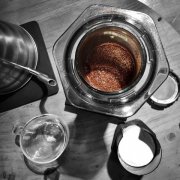
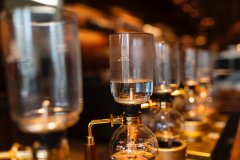


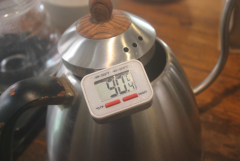
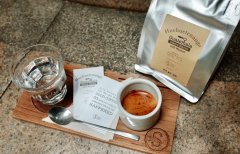
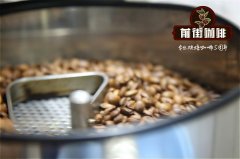
 精彩导读
精彩导读



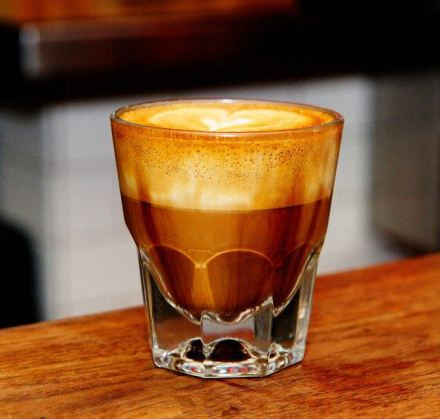





 热门资讯
热门资讯 关注我们
关注我们